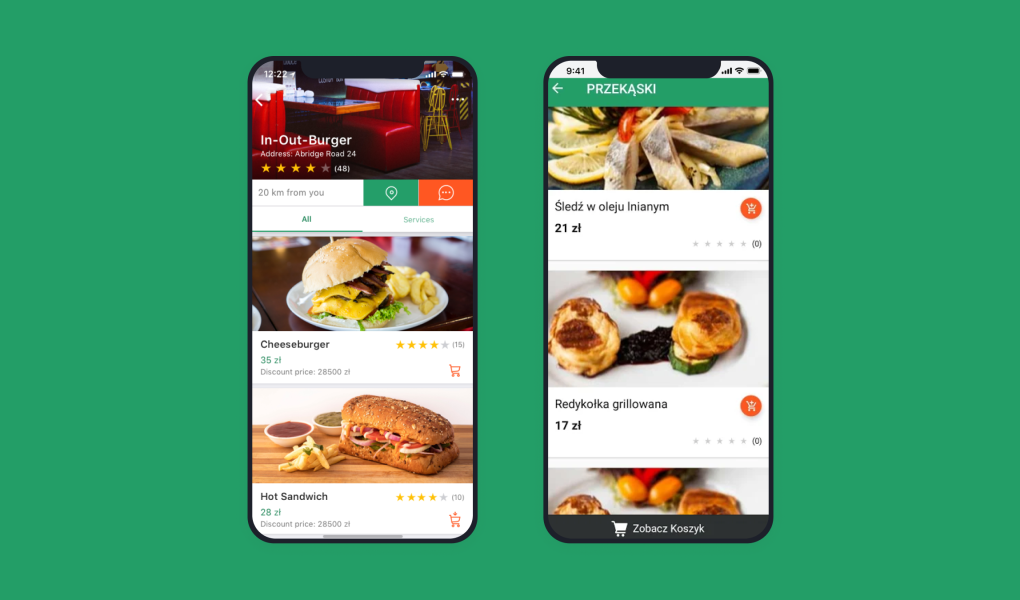Creating an app from an idea to a product launch can be a daunting task for non-technical founders, but with the right approach and a dedicated team, it can be done successfully. In this article, we’ll take a detailed look at the steps involved in making an app, from the initial idea and market research to the final product launch.
Table of Contents
Step 1: Understand the Problem
The first step in creating an app is to have a clear understanding of the problem you’re trying to solve. Identifying the problem and the target audience is crucial to developing an app that meets the needs of your users. Whether you’re striving to create an educational app, a solution for e-commerce, or logistics- it’s essential to know what your target audience is looking for and what their pain points are. This information will also be critical when it comes to communicating your vision to potential partners, investors, or developers. In case you’re still looking for a tech vendor in the world of mobile app development, here are the nearshore software engineering teams’ regions by the platform your project is aimed at.
Step 2: Research the Market
Once you have a clear understanding of the problem you’re trying to solve, the next step is to research the market to identify existing solutions available. Identify the features of the app, the target audience, and the pain points of your audience. This will give you a clear idea of what features to include in your app and what sets your app apart from the competition.
Step 3: Sketch a Design and Flow of the App
The next step is to create a visual representation of the app, including sketches of the screens, wireframes, and user flow. This will help you to communicate your vision to potential developers more effectively and also help you create a more accurate cost estimate for the development. It also helps to have a design concept as a reference point for development.
Step 4: Find a Technical Co-founder or Partner
If you don’t have the technical skills yourself, finding a technical co-founder or partner who can help you to develop the app is a great option. A technical co-founder or partner can help you to navigate the technical aspects of app development and ensure that the app is built to a high standard. If you are unable to find a co-founder or partner, you can also consider hiring a team of developers.
See also: 21+ Digital Marketing Strategies to Boost Your Catering Business
Step 5: Get a Minimum Viable Product (MVP) Developed
Consider building an MVP first, which is a minimum version of your app that includes only the most essential features. This will allow you to test the market and get user feedback before investing in a full-scale app development. An MVP will also help you to validate your app idea and get feedback from potential users, which can be used to improve the final product.
Step 6: Development
Once you have a clear idea of what you want to build, it’s time to start the development process. You can choose to develop the app yourself or hire a development team to do it for you. When hiring a team, it’s essential to find a team with the experience and skills to deliver a high-quality product. The development process typically includes the following steps:
- Setting up a development environment
- Designing and developing the app’s interface
- Creating the app’s database
- Developing and testing the app’s features
- Deploying the app to the app stores
Step 7: Testing
Once the app has been developed, it’s important to thoroughly test it to ensure that it is stable and free of bugs. This includes both functional and non-functional testing, such as usability testing, performance testing, and security testing. This step is crucial to ensure that your app is ready for launch.
Step 8: Launching
After development and testing are completed, it’s time to launch your app. The process of launching an app includes submitting it to the app stores and promoting it to potential users. It’s also important to monitor the app’s performance and gather user feedback after launch. The app store submission process is a crucial step, as it can take some time to get the app reviewed and approved. It’s essential to be patient and to work closely with the app store to ensure that your app meets their guidelines. Once your app is approved and live, it’s essential to promote it to potential users through various marketing channels.
Step 9: Maintenance
Once your app is launched, it’s important to continue to maintain it by addressing any bugs and issues that may arise, adding new features and updates, and monitoring its performance. It’s essential to keep the app updated to ensure that it remains relevant and continues to meet the needs of your users. It’s also important to gather user feedback and use it to improve the app.
In order to increase the chances of success, it is also important to always keep in mind the user experience, which is an important part of designing and developing an app. Additionally, by defining clear goals and metrics, you can track the success of your app and make any necessary adjustments along the way.
How to Make Mobile Apps: More Aspects to Consider
Another critical aspect of making an app is to have a solid plan for monetization, whether it be through in-app purchases, subscriptions, advertising, or a combination of these. Developing a sustainable monetization strategy is vital to the long-term success of your app.
It’s also important to consider the various platforms that your app will be available on, such as iOS and Android.
Each platform has its own set of guidelines and requirements, and it’s important to ensure that your app is compatible with each one. Additionally, you should also consider how you will handle user data, privacy, and security concerns.
Finally, it’s crucial to consider the long-term maintenance and support of the app, including updates and upgrades, customer service and community management, and scalability and performance optimization. Having a plan for long-term maintenance and support can help to ensure the ongoing success and longevity of your app.
It’s essential to be realistic about the time and resources needed to develop an app, and it’s important to be flexible and open to feedback throughout the process. With the right approach, an innovative idea, and a strong team, you can bring your app to life and achieve success in the competitive world of custom mobile app development.
Besides, it’s vital to keep this in mind that throughout the app development process is the cost. The cost of developing an app can vary greatly depending on the complexity and features of the app as well as the team or agency that is doing the development. It’s important to have a clear budget and to set realistic expectations for the cost of development. One way to keep the cost under control is to use an MVP approach, where you focus on the core features of the app and add more features in future releases.
It’s also a good idea to stay informed about the latest trends and technologies in app development, as this can help you to stay ahead of the competition and to make informed decisions about the features and functionality of your app.
In addition, before you launch your app, you should also consider its scalability. This means that the app should be designed in a way that allows it to handle an increasing number of users and transactions. This is particularly important if you are building an app that you hope will be successful and will have many users.
Another key aspect of creating an app is to have a robust user engagement and retention strategy. Acquiring users is only one part of the equation, it’s also important to keep users engaged and interested in the app.
One way to do this is by creating a sense of community and encouraging user-generated content. Another approach is to implement push notifications and in-app messaging to keep users informed of new features and updates.
Also, creating an effective app onboarding process is critical to ensure that new users are able to understand and fully utilize the app from the very first time they open it. This can be achieved by creating a simple and easy-to-understand tutorial or by providing helpful prompts and tips throughout the app.
Lastly, it’s also important to consider localization and accessibility, which means that your app should be accessible and usable by as many people as possible, regardless of their language, location, or physical abilities. This is particularly important if you want your app to be successful globally.
Summarize
In summary, creating an app from an idea to a product launch requires a lot of hard work and dedication, but with a clear understanding of the problem, thorough market research, a well-defined design and flow, a dedicated team, a solid plan for monetization, maintenance, scalability and accessibility, a robust user engagement and retention strategy, and a realistic budget, it’s definitely possible to turn your idea into a successful product. It’s essential to have a long-term vision and a well-thought-out strategy, gathering the right resources and execution to make a successful app.



